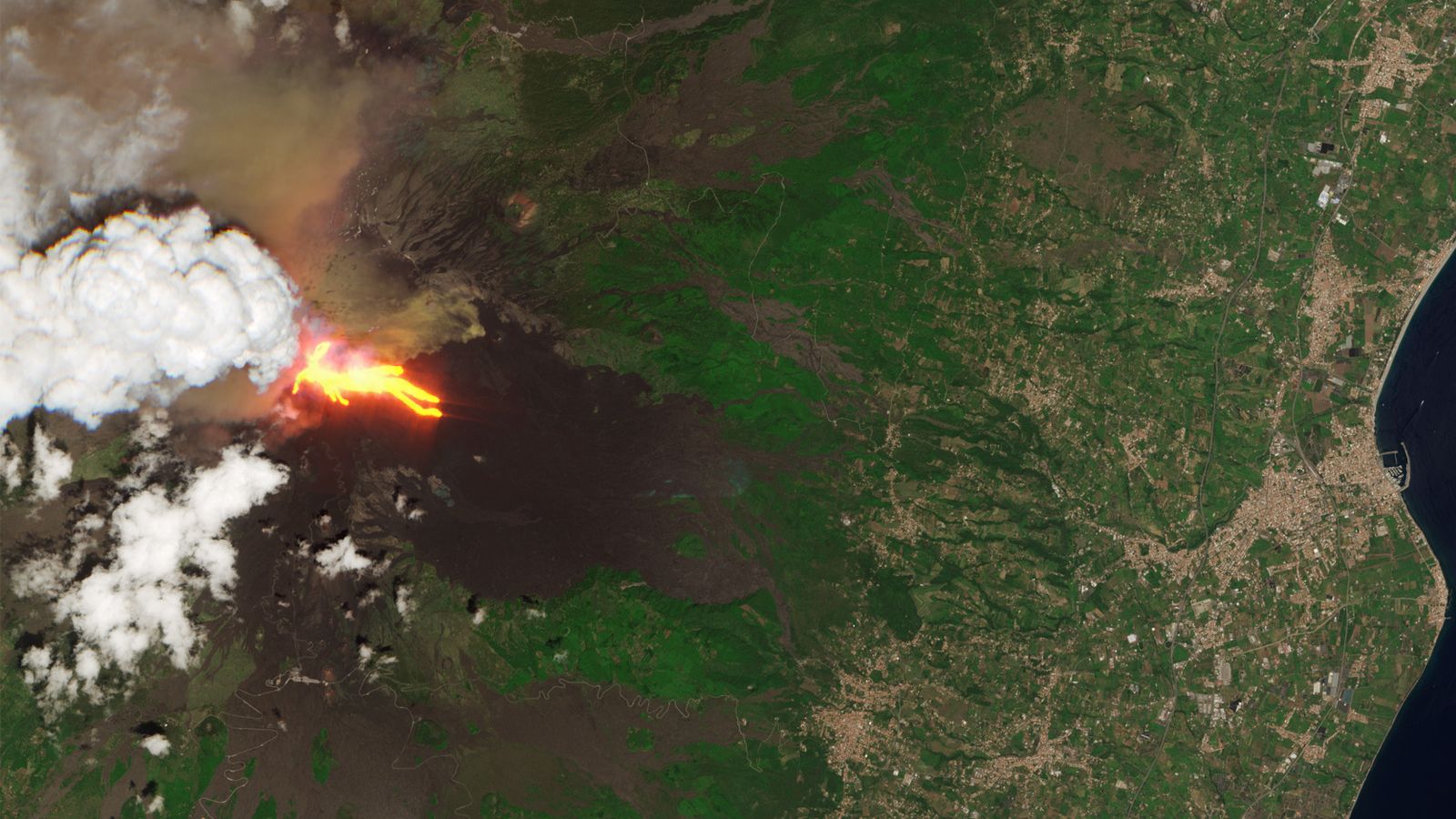Follow us on Google News (click on ☆)
Images captured by the ESA's Sentinel-5P satellite show the scale of the eruption. The ash plumes reached an altitude of 21,300 feet (6,500 meters), nearly double the height of the volcano. This data also revealed the presence of sulfur dioxide, a gas hazardous to health.

Huge smoke plumes and rivers of lava escape from Mount Etna during its eruption on the island of Sicily.
Credit: contains modified Copernicus Sentinel data (2025), processed by ESA
Mount Etna, located on the eastern coast of Sicily, dominates the landscape with a diameter of 22 miles (35 kilometers). During this eruption, pyroclastic flows traveled more than 0.6 miles (1 kilometer) in less than a minute, stopping in the Valle de Leone. This area acts as a natural containment basin, limiting damage.
Mount Etna has been active for centuries, with sporadic eruptions that have marked history. This latest eruption is considered medium-sized. Authorities assured there was no danger to the population, although tourists had to flee the area.
The ESA's Sentinel-5P satellite played a key role in observing this event. Its high-resolution multispectral imager captures precise details of the Earth's surface, providing spectacular images of the eruption.
What are the dangers of sulfur dioxide emitted by volcanoes?
Sulfur dioxide (SO2) is a toxic gas that can cause respiratory problems. During eruptions, it can form volcanic fog, or 'vog,' particularly dangerous for people with asthma.
At high altitudes, SO2 can also affect the climate by reflecting sunlight. This can lead to temporary cooling of the Earth's temperature.
Satellites monitor SO2 emissions to alert authorities and populations. This monitoring is crucial to prevent impacts on health and the environment.